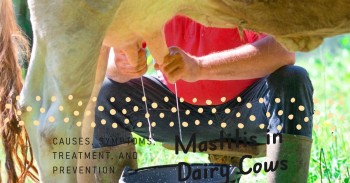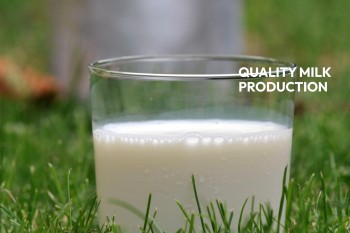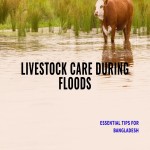Foot and Mouth Disease in Cattle 🐄🦠
Foot and Mouth Disease (FMD) is a
highly contagious viral infection that primarily affects cloven-hoofed animals,
including cattle. This comprehensive guide aims to provide a deep understanding
of FMD in cattle, covering its causes, symptoms, diagnosis, treatment,
prevention, and control measures. FMD outbreaks can have devastating economic
consequences for the livestock industry, making it essential for cattle owners
and veterinarians to be well-informed about this disease.
Causes of Foot and Mouth Disease
FMD in cattle is primarily caused
by the Foot and Mouth Disease Virus (FMDV), a member of the Picornaviridae
family. This virus exists in multiple serotypes and can rapidly mutate, posing
a significant challenge to its control. The virus is highly contagious and can
spread through various means, including direct contact with infected animals,
contaminated equipment, aerosols, and even via humans who have been in contact
with infected animals.
Symptoms
Early detection of FMD is crucial
for preventing its spread within cattle populations. Understanding the symptoms
can help cattle owners and veterinarians take swift action:
Early Signs:
Excessive
salivation: Infected cattle may drool excessively due to painful oral
lesions.
Fever:
Elevated body temperature is a common early sign, often exceeding 104°F (40°C).
Lameness
or reluctance to move: Cattle may exhibit lameness and avoid walking due
to painful foot lesions.
Oral Lesions:
Painful
blisters on the tongue, lips, and gums: These blisters can make it
painful for cattle to eat and drink, leading to weight loss.
Drooling
of saliva: Excessive drooling is a noticeable symptom, and affected
cattle often have a frothy mouth.
Refusal
to eat: Due to oral discomfort, infected cattle often avoid feeding,
which can lead to malnutrition.
Lesions on Hooves:
Blisters
and sores on the feet: Painful lesions can develop on the hooves,
leading to lameness and reluctance to walk.
Limping
or lameness: Cattle may have difficulty walking, affecting their
mobility and productivity.
Decreased
milk production: Dairy cattle may experience a significant drop in milk
production, causing financial losses for dairy farmers.
Diagnosis
Accurate diagnosis of FMD is
critical for implementing proper containment measures. Veterinarians use
laboratory tests, including enzyme-linked immunosorbent assay (ELISA) and
polymerase chain reaction (PCR), to confirm the presence of FMDV in cattle.
These tests are highly sensitive and specific, ensuring reliable results.
Treatment
Currently, there is no specific
antiviral treatment for FMD in cattle. Management focuses on providing
supportive care to affected animals:
Medications Used:
Pain
relievers (e.g., non-steroidal anti-inflammatory drugs or NSAIDs): These
alleviate discomfort, reduce fever, and improve the animal's overall
well-being.
Antibiotics:
These may be administered to prevent secondary bacterial infections, which can
complicate the disease.
Fluid
therapy: Proper hydration is crucial, especially if cattle are reluctant
to drink or eat.
Prevention
Preventing FMD is the most
effective strategy for safeguarding cattle populations. Vaccination plays a
pivotal role in FMD prevention. Various FMD vaccines are available, and their
use should align with local regulations and outbreak status. Regular
vaccination of cattle can significantly reduce the risk of FMD outbreaks.
Control Measures
In the event of an FMD outbreak,
swift control measures are essential to limit its spread within and across
cattle herds. These measures include:
Quarantine
and movement restrictions: Infected cattle should be isolated, and the
movement of animals should be controlled to prevent further transmission.
Disinfection
of contaminated areas: Proper cleaning and disinfection of barns,
equipment, and vehicles are crucial to eliminate the virus and reduce its
environmental presence.
Surveillance
and testing: Monitoring nearby cattle populations for FMD and conducting
diagnostic tests can help identify infected animals quickly, allowing for
prompt containment.
In conclusion, Foot and Mouth
Disease is a highly contagious and economically devastating disease in cattle.
Understanding its causes, recognizing early symptoms, and implementing
effective prevention and control measures are crucial for cattle health and the
sustainability of the agricultural industry. Stay informed, protect your
cattle, and contribute to the well-being of the livestock sector. For more
in-depth information on FMD and related topics, please visit BDVets Blog. For authoritative sources and
updates on FMD, visit [the World Organisation for Animal Health (OIE) and the Food and Agriculture Organization (FAO).
🐮🌾

















